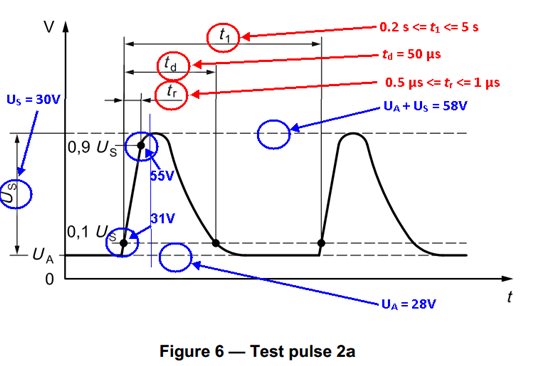Hi team,
I would like to verify quickly if the LM2936Q device can deal with high voltage transients up to 58V. This is typically requiredin a 24V boardnet.
Transient:
Impuls U_transient = 58V (vbat 28V+ transient 30V) for 40ms duration , td 250ms Ri=2R; Impuls is repeated 5s at 25°C.
In the attachment you can find the impuls defined as ISO7637-2.
Please confirm that the following devices can be used 24v boardnet applications.
LM2936QM-5.0/NOPB
LM2936QM-3.3/NOPB
Vin 40V max, transients up tu 60V.
Regards,
Alex


